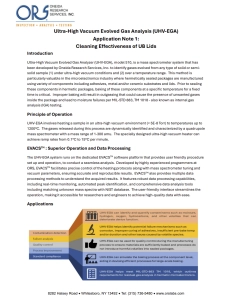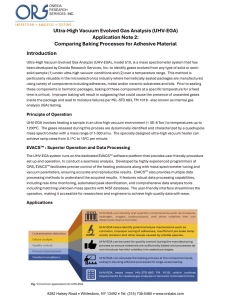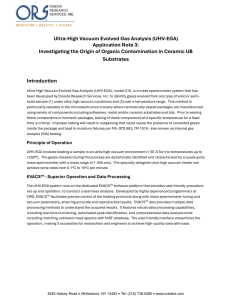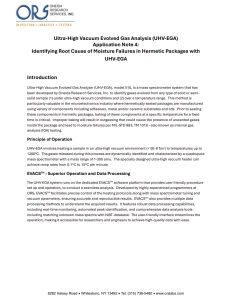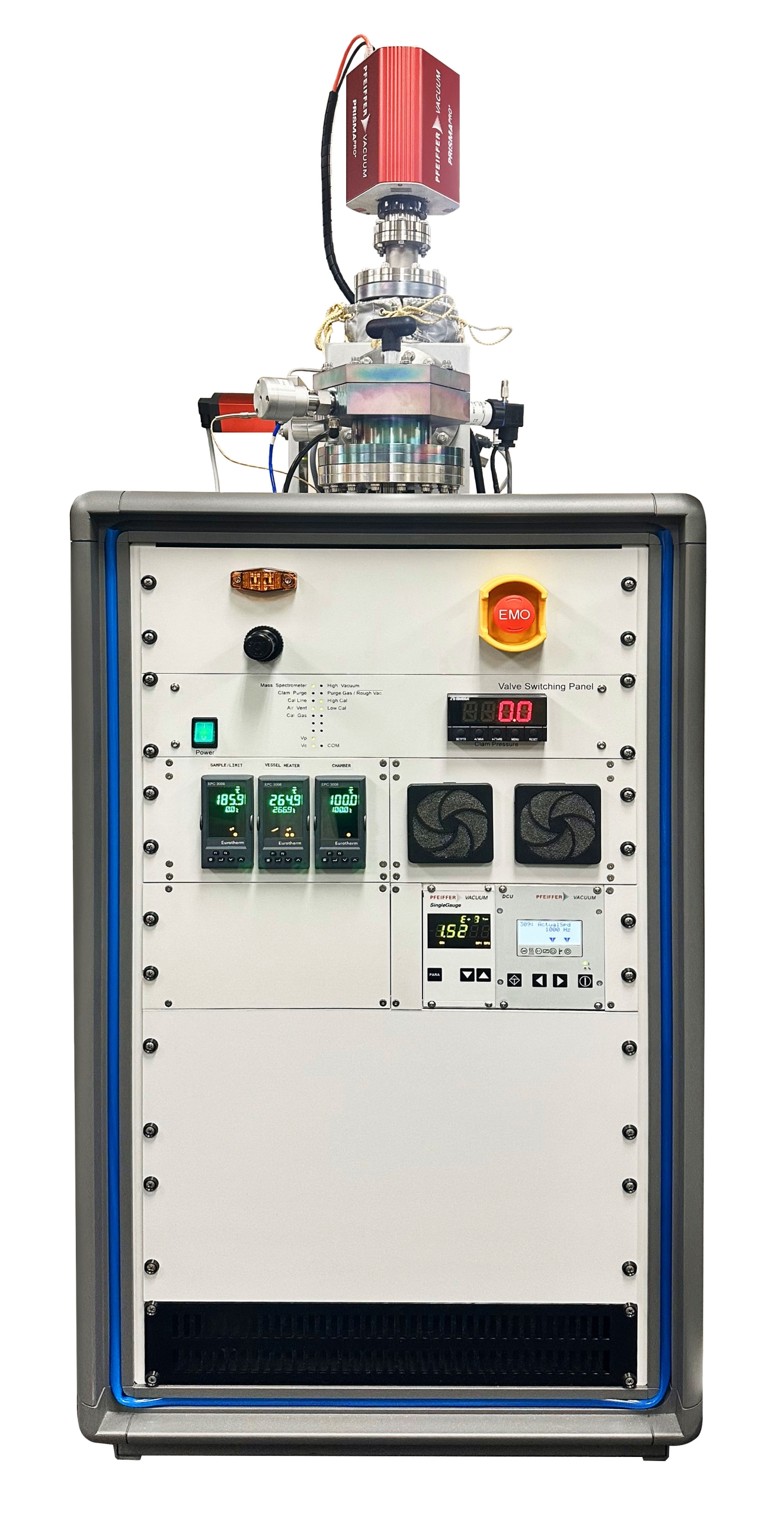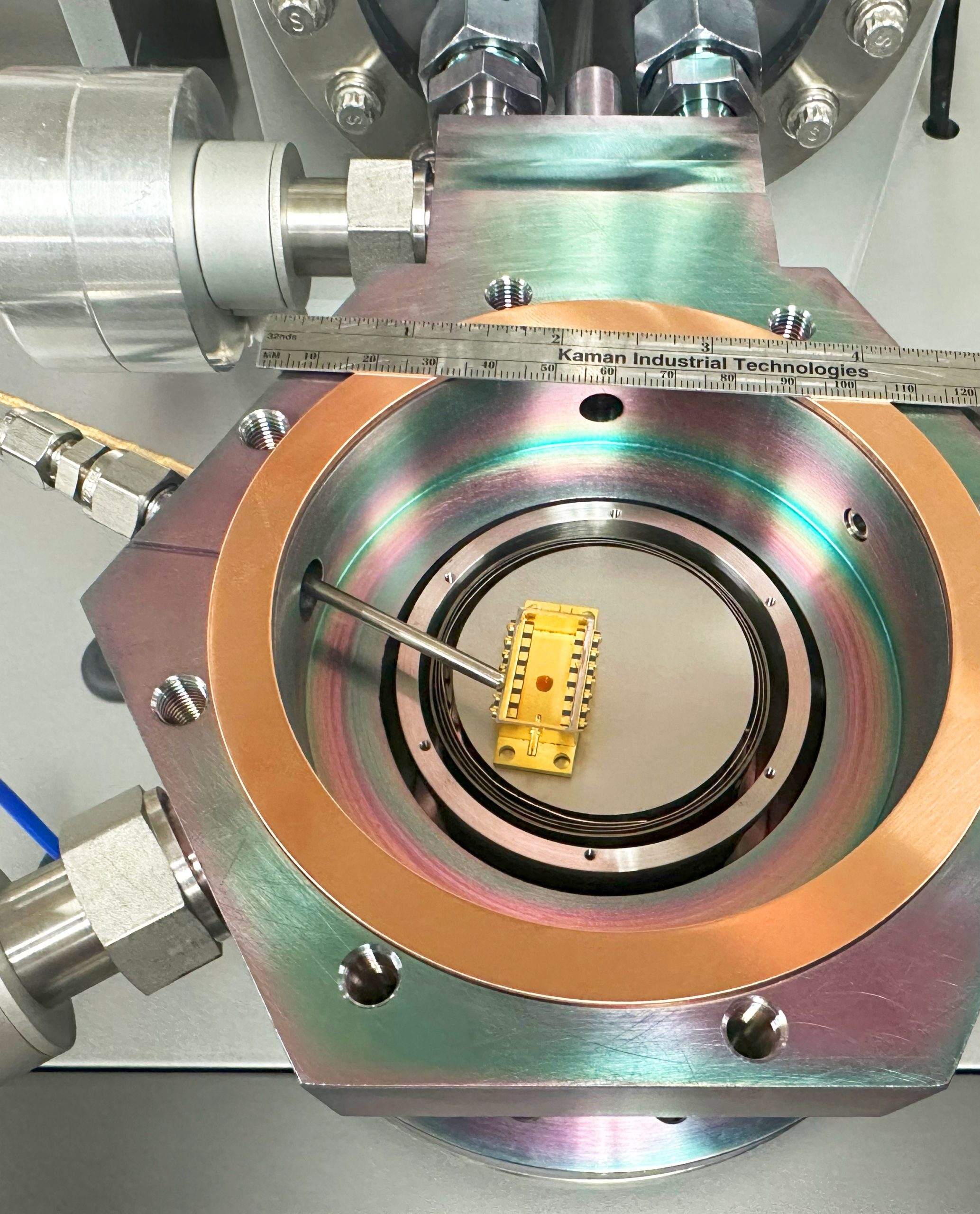Ultra-High Vacuum Evolved Gas Analysis
What is an Ultra-High Vacuum Evolved Gas Analyzer (UHV-EGA)?
UHV-EGA is also known as thermal desorption spectroscopy (TDS) or simply evolved gas analysis. UHV-EGA is a mass spectrometer system that can identify evolved gases from any solid or highly viscous (e.g. uncured epoxy) sample. Samples can be subjected to a maximum temperature up to 1200°C in an ultra-high vacuum (~1E-9 Torr). Ramp rates range from 0.1°C to 15°C per minute. Gases released during this outgassing process can be dynamically identified and characterized by a quadrupole mass spectrometer that has a mass range of 1-300 amu.
What types of samples can typically be analyzed using UHV-EGA?
UHV-EGA can analyze any solid or semi-solid sample that can be placed on a 2” (~5 cm) diameter heater with headspace of 2.375” (~6 cm).
What value does UHV-EGA bring to the microelectronics industry?
UHV-EGA enables analytical characterization of evolved gases from solids in an ultra-high vacuum environment and has significant value for any type of industry dealing with hermetically sealed microelectronics packages. Here are some key benefits:
- Contaminant Detection:
UHV-EGA equipment can identify and quantify contaminants such as moisture, hydrogen, oxygen, hydrocarbons and other volatiles that can deteriorate device function. This is crucial for ensuring the reliability and longevity of microelectronics. - Failure Mechanism Analysis:
By analyzing evolved gases, UHV-EGA makes it possible to identify potential failure mechanisms such as corrosion, electrical leakage, dendritic growth and other issues caused by volatile species. This helps you to mitigate these risks by improving your design and manufacturing processes. - Quality Control:
UHV-EGA can be used for quality control during the manufacturing process. By characterizing the gases that can evolve during thermal excursions, one can ensure that the materials and processes used are not introducing harmful volatiles into the sealed packages. - Process Improvement:
UHV-EGA can simulate the baking process at the component level. Using this capability, a suitably efficient process can be devised for large-scale baking. The data obtained by UHV-EGA can be used to make informed decisions about material selection (and validation), sealing processes and other manufacturing parameters. This can lead to efficient processing and improved product quality and reliability. - Standards Compliance:
UHV-EGA can help in meeting industry standards such as MIL-STD-883, which outlines the requirements for residual gas analysis in hermetic microelectronics. This ensures that devices meet the necessary criteria for high-reliability applications.
Request a Demo or Follow-Up Call
Cleaning Effectiveness of UB Lids
Comparing Baking Processes for Adhesive Material
Investigating the Origin of Organic Contamination in Ceramic UB Substrates
Identifying Root Cause of Moisture Failures in Hermetic Packages with UHV-EGA
Typical Data Plots
During UHV-EGA four parameters are measured: (1) total gas pressure (2) heater temperature (3) sample temperature and (4) ion counts for each amu for the entire mass range. In addition, time stamps are also recorded. Acquisition of these data facilitates data representations in multiple ways. For example, a pressure graph shows temperature and time vs total gas pressure and heater and sample temperatures. The other useful data representation is ion counts of each mass with respect to heater and sample temperature, clearly showing release of any gas species with respect to sample temperature. The data also facilitates 3D representation where total ion counts of each mass is plotted with respect to temperature (i.e., Ion counts vs mass vs temperature).
Overall, UHV-EGA can play a crucial role in enhancing the reliability, performance and longevity of hermetically sealed microelectronics packages. It can also provide valuable insights for process optimization and quality assurance.
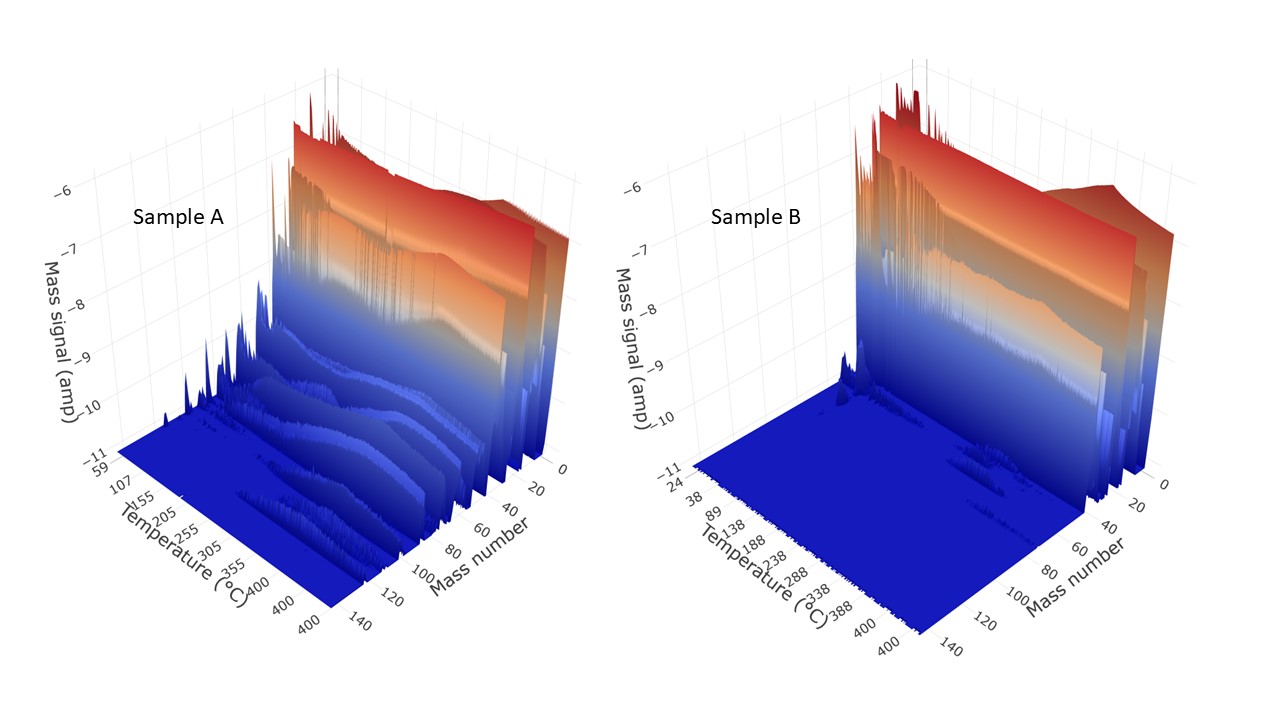
3-D representation of data acquired for two samples clearly shows higher outgassing of masses above 40 amu for sample A. Unlike sample A, no significant release observed for sample B. Both the samples were heated from room temperature to 400°C.
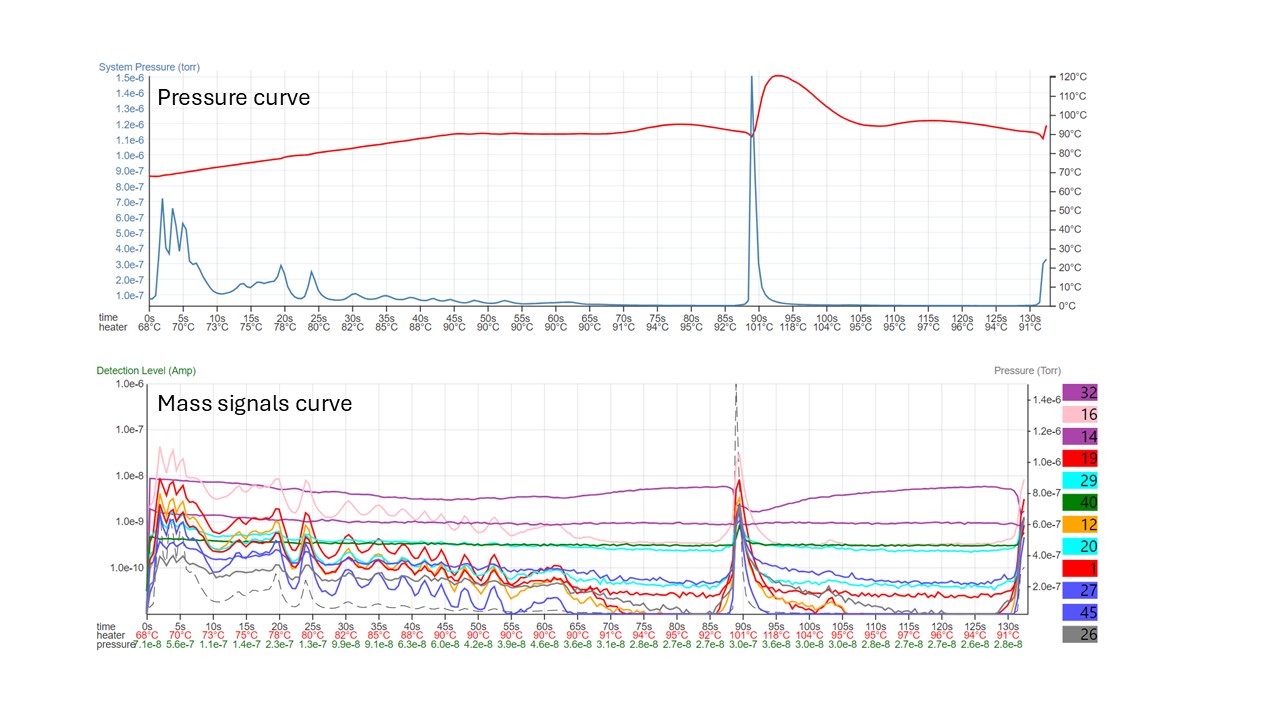
2-D representation of data can show total gas release in terms of pressure curve with respect to heater temperature to identify outgassing at specific temperature. Mass signals curve provides release pattern for each mass with respect to heater temperature and total gas release (dashed line). Such presentation helps to identify gas species outgassed at given temperature.
What is a typical UHV-EGA study procedure?
- The sample is first weighed before loading into the ultra-high vacuum chamber.
- Subsequent to sample loading, pump down is initiated.
- If total outgassing GCMS is required, a standard adsorbent tube is placed in an assigned slot in the vacuum chamber.
- Once the chamber reaches the required vacuum (typically ~1E-8 Torr), the system is ready for analysis.
- For the analysis, the heating profile (i.e., ramping and dwelling steps along with temperature settings) is required to set.
- For the mass spectrometer, mass range (typically 1-150 amu) and scan frequency (determined based on heating rate) are set.
- After setting all the experimental requirements, analysis is started.
- During analysis, five parameters are captured: time, heater temperature, sample temperature, total system pressure and mass scans (ion signals).
- The data visualization during analysis provides key information like: (1) pressure and temperature change with respect to time (2) mass signals (in descending order) with respect to temperature and time (3) 3D plot mass-vs-temp-vs-ion counts.
Applications of UHV-EGA:
Samples:
Type: Solids
- Wafers
- Ceramics (high-temperature ceramics)
- Battery raw materials
- Electronics packages and their components
- Metals and alloys
- Polymers
Processes:
- Simulating baking and sealing processes
- Annealing
- Epoxy curing process
- Optimization of baking duration
- Outgassing rates (e.g., moles/g/sec)
- Component level failure analysis

